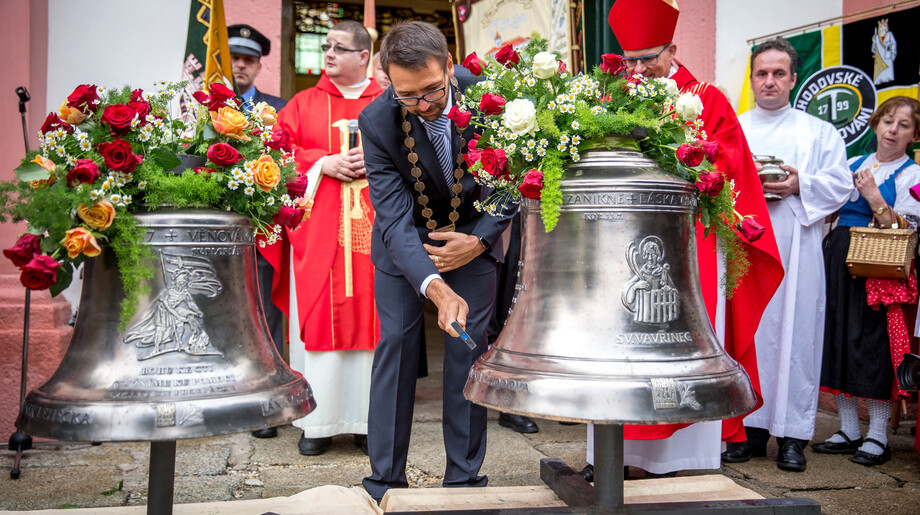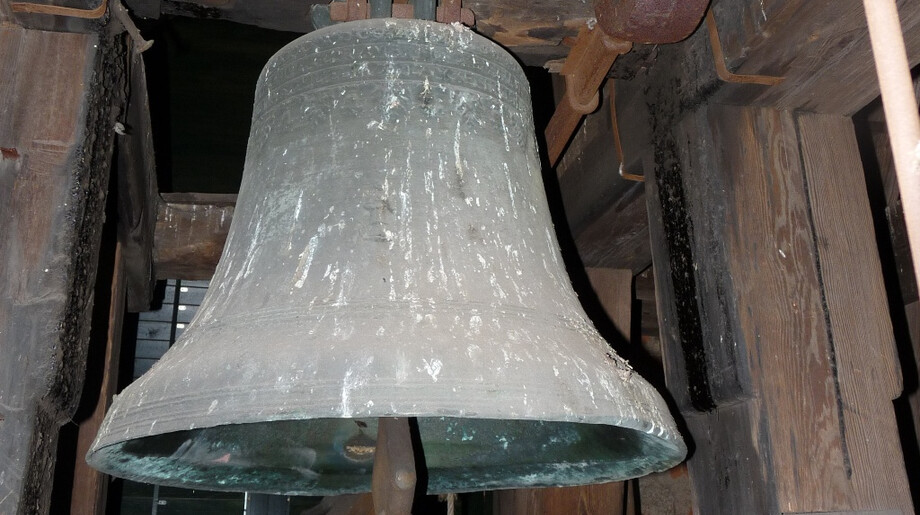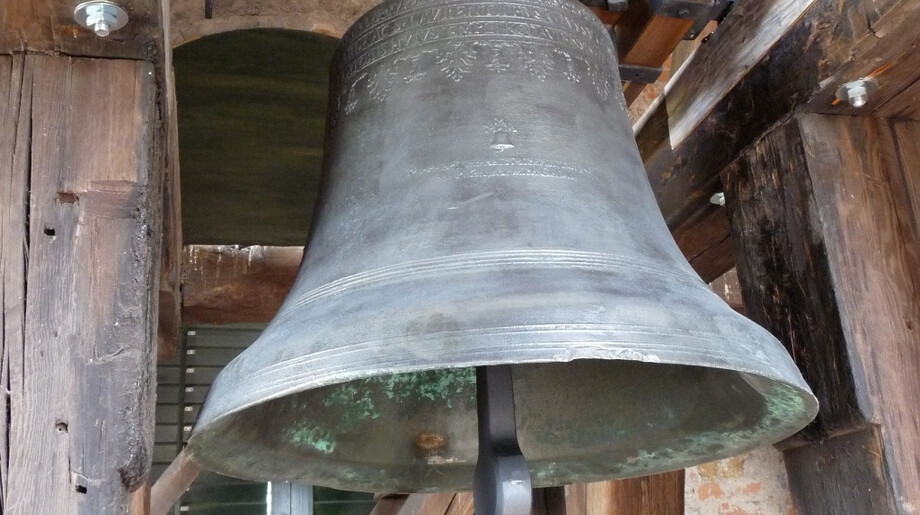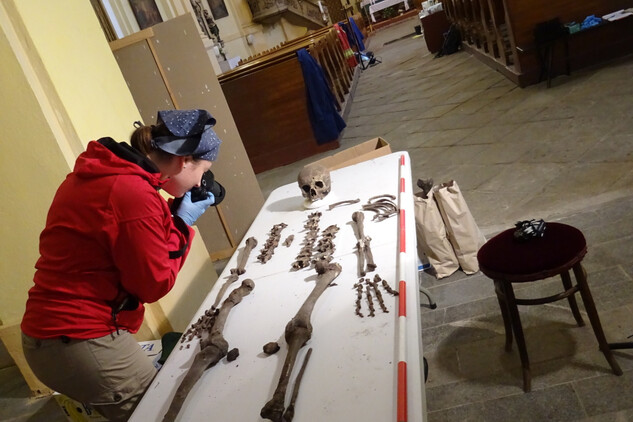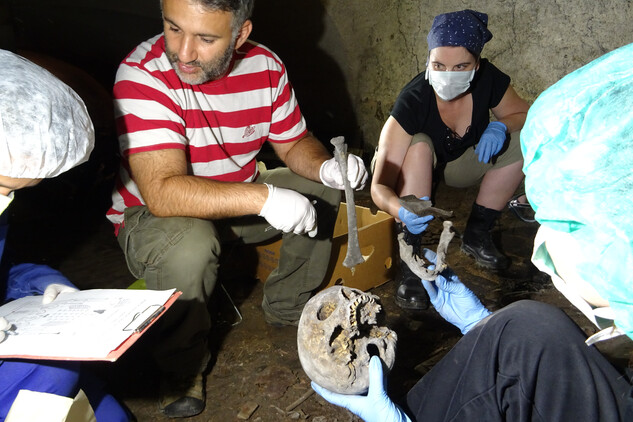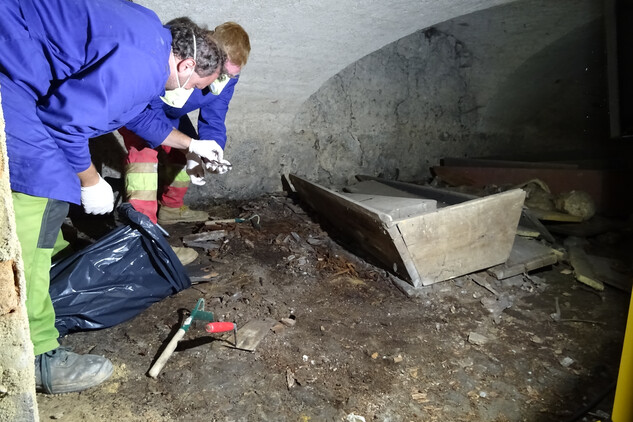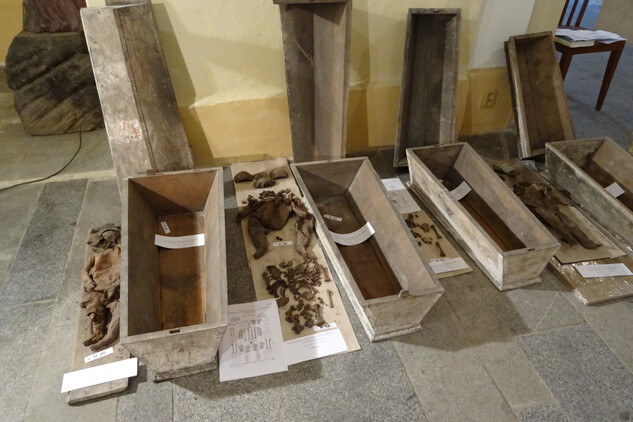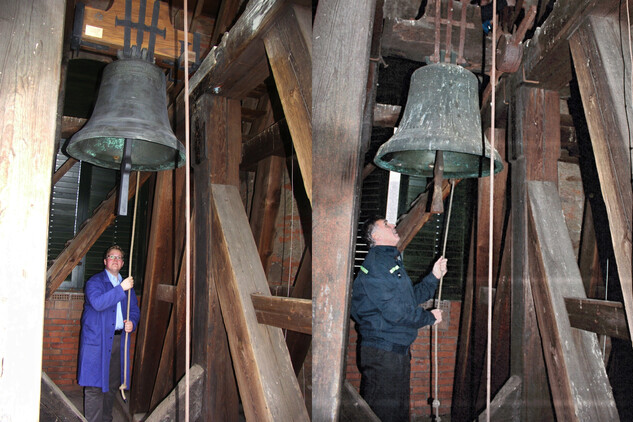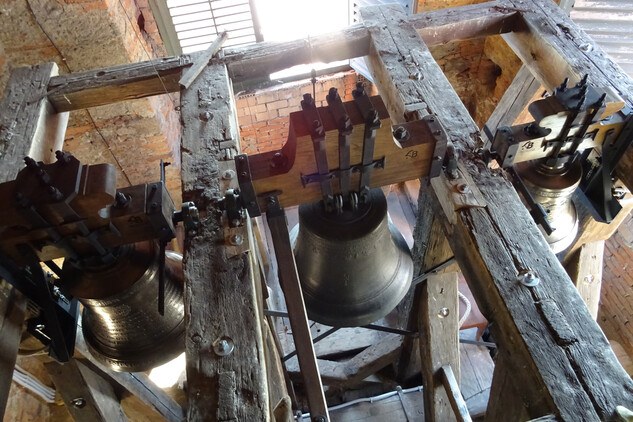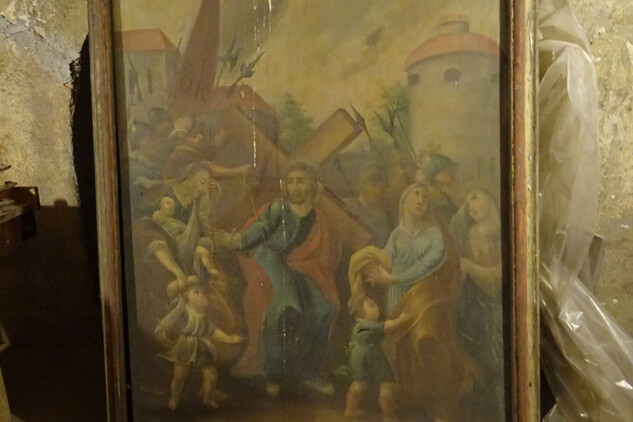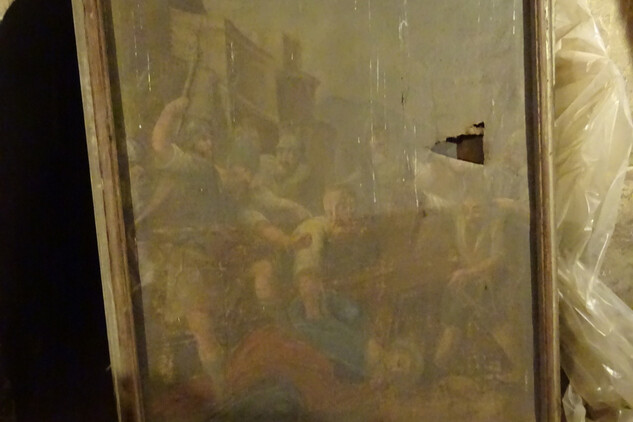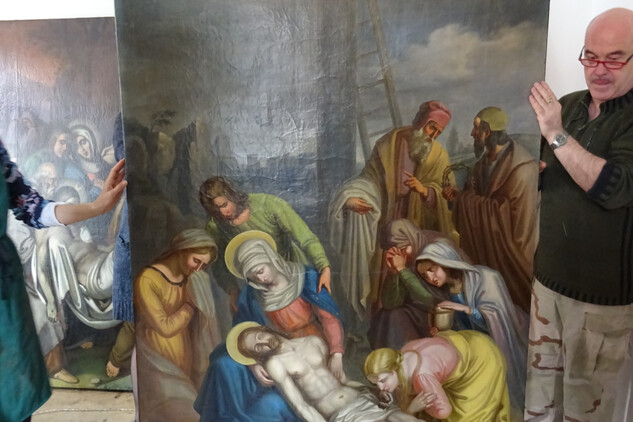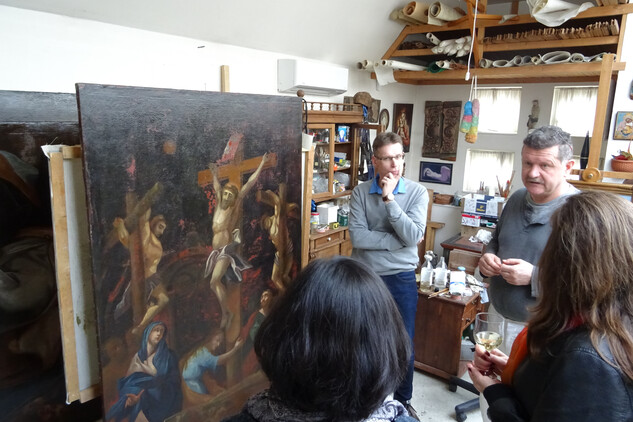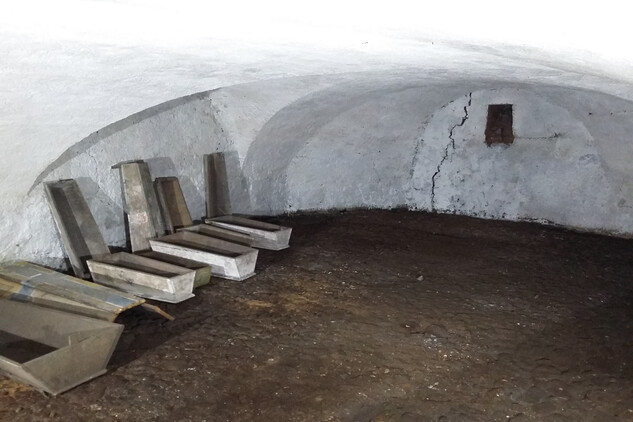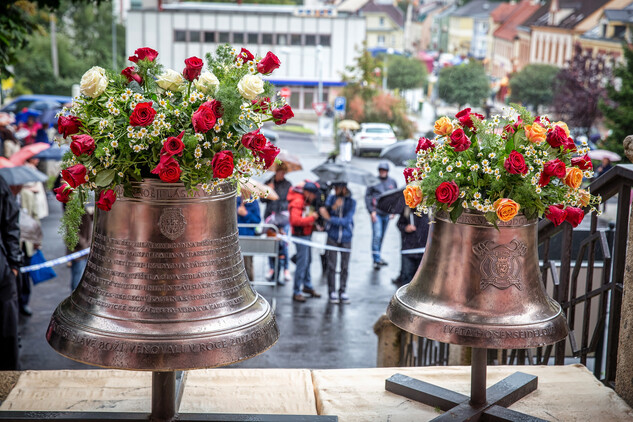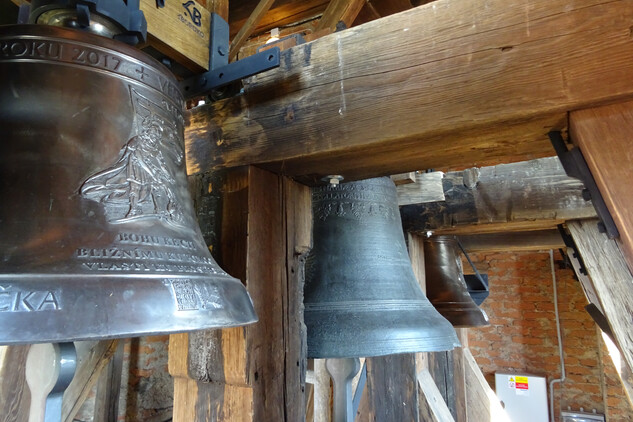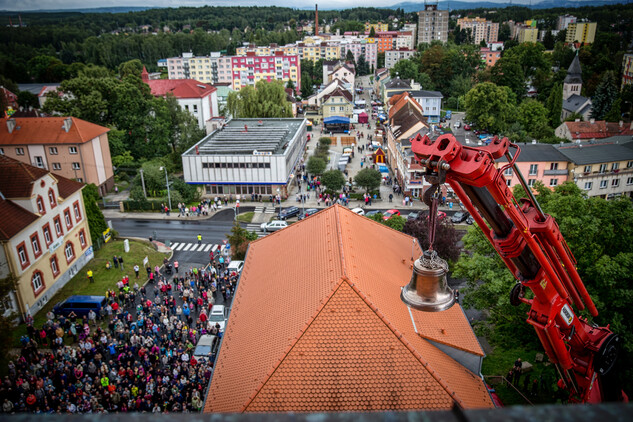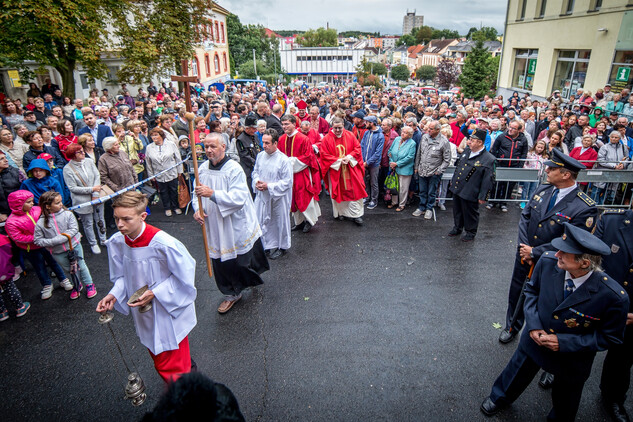The building of the Baroque St. Lawrence’s Church started between 1725 and 1733, yet it wasn’t finished until the mid-19th century. After WW2, when the original German population was displaced, the church started deteriorating, and at the turn of the century it was totally neglected; the roof let the rain in, and outer stucco fell apart, sometimes with big chunks of the wall. The Roman Catholic parish of Chodov couldn’t collect necessary funds for the general reconstruction, so the church become the municipal property in late 2005; a year later, the town hall started the reconstruction. In 2017, several large projects were finished, affecting the major parts of the church – a crypt, a bell (the one and only that’s been preserved) and the paintings on the Way of the Cross.
Using grants, and in cooperation with German natives and Roman Catholic church, all 14 canvases of the Way of the Cross were restored in 2016–2017, including original frames with extensions for inscriptions. The set of paintings is a unique example of work of regional painters in the 18th and 19th century. The restoration was made by painters Milan Kadavý and Jiří Matějíček. After a thorough survey, the full relining of the canvases was made, due to their bad conditions caused by exposure to damp and cold environment. The destroyed parts of the paintings were not reconstructed but sensitively retouched. After successful restoration of the whole set, the paintings were returned to their original places in the nave.
Out of four church bells, only John Wilhelm remained, made in 1658; the rest was smelted for military purposes during World War 1. It’s the oldest preserved heritage in Chodov, out of use since 1981 due to bad conditions. Thanks to a public fundraising campaign, the bell could be restored – the oak head was replaced, and the new heart and ironwork were made. Manual ringing has been preserved. The restoration of the whole church bell set finished in 2017 by casting two new bells, funded by the town citizens in a public fundraising campaign.
In summer 2017, the town of Chodov conducted, in cooperation with the Cheb Museum and the Institute of Anatomy at the First Faculty of Medicine of Charles University, the archaeological and anthropological survey of the church crypt used for the burials of the Plankenheim House members. Based on this survey, a minor exhibition related to this house was established.
By calling a public fundraising campaign for the restoration of church bells, regular reporting on the restoration procedures, and presenting the works of archaeologists and anthropologists in the church crypt, the town has raised unprecedented interest in the cultural heritage of the region, in the town that was virtually destroyed by new housing estate building, and the historical memory was severely damaged after the displacement of the original German population. The town also published several high-profile books on heritage sites, aimed at general public. Due to these efforts, thousands of town citizens attended the presentation of the restoration results.
Nominated for the Karlovarský Region by the regional center of the National Heritage Institute in Loket
The Town Hall of Chodov, represented by Patrik Pizinger (Mayor of Chodov) and Miloše Bělohlávek (the town historian), was nominated for the National Heritage Institute Prize, category: Rescue of a Heritage Site, Restoration.
